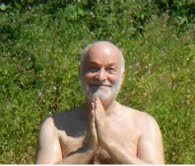According to this theory of the gradual creation of the universe we imagine a "beginning" called Big Bang (the big bang) in which the static energy concentration reaches a critical phase of uncontainability and results in a collapse which is the beginning of time space. and coincides with the manifestative projection in which energy gradually takes shape.
The gradualness and continuity of creation is measured through an "aspect" that always accompanies the creative process. This aspect is immanent and transcendent and it is the consciousness, which is an integral part, a sort of intrinsic taste or quality, of the ongoing energetic development. Consciousness and energy are in short the same thing, as time and space appear and coexist complementarily. Without duration in time and expansion into space nothing could manifest itself and without consciousness and energy no manifestation would have meaning or existence.
For this reason it is impossible to separate the manifestation from the awareness that ratifies it. Each element, being the transformation in the infinite possibility of energy movements in space time, preserves a specific memory (or intelligence) that is necessary for the cohesion of its substance, or state of mutation (if we want to use metaphysical terminology). This process of psychosomatization of the existing is simultaneously impressed in a sort of "negative" that corresponds to the formula with respect to the experimental procedure. But it is not just a description, it is also a substratum, it is a constituent force (a will) that allows the whole manifestation to maintain a form and a name, in short, it makes it continue a specific energetic identity.
Hence also the concept of "psychohistory", which is none other than the design memory that constitutes the phenomena, which remains etched in the very results of active phenomenology: the vital processes. So the story is not the one written on the books, that of the books is only a misleading, partial and subjective documentation that describes the aspects experienced by some witnesses or witness listeners. History as we know it is a shaky pseudo-truth told and corroborated (for speculative purposes) by its editors. What we call history is at best the description of a realistic imaginative shared (more or less) by many (however, a limited number of people). But the truth can not be partial, as the integrity of our bodily existence can not be crumbled. In the sense that we can not say "this organ or this appendix does not belong to me or it is useless, the hair the nails and the hairs are not important because they grow and are eliminated without excessive damage ..." or similar jokes. In fact, even if we almost always use the right for our actions we also need the left, if we become bald we consider it a defect, if the nails break even the fingers suffer, etc.
In short, the historical truth should correspond to an entireness and this wholeness is given only by that subtle memory that remains etched in the forms in continuous phenomenal mutation. This "memory" on a vital level is called DNA and on a psychic level I call it "psychostory", ie the ability to read through automatic storage, retention of accounting, present in the set of vital processes involved in events. And since there is no separation in any vital process, manifested by our direct involvement or indirect, and here I still make the example of the human body in which if teeth are lost, for example, this fact also involves all the others organs and appendages, from head to toe. Without teeth the alimentation deteriorates, the individual loses the aggressive-defensive capacity, etc. etc. in short, every vital element is influenced. This also happens logically for events on the face of the planet: an atomic bomb in Siberia affects the environmental conditions of the Antarctic ....
Finally, if we want to know the history, the real one, it is necessary to meddle in the warehouse of the vital mnemonic function, which is however present in a holistic and holographic key in each of us.
In India this warehouse is called Akasha, Jung called it the Collective Unconscious, the esoteric call it the Earth's Aura .
How can we draw on this mysterious and ever-present archive?The answer lies in the question itself ...
How does water know the water? How does fire know the fire? How do you know yourself?
SINCE IT ...! Only being it ... Not as an onlooking observer but as a constituent substance in the current energy trend. Stripping then the separation that prevents us from perceiving the whole in which we are an integral part. In fact, those who are endowed with foresight or mediumship can perceive this total "memory" of the great magma of existence only by dissolving in that "memory" (awareness). That is, by renouncing the small separative memory of the ego that leads us to identify with the single molecule of the life process and to describe the existing in the narrow scope of the perceptible, limited to the circumscribed presence. Which is often what happens in official history or in philosophy or religion or empirical science.
Paolo D'Arpini

Testo italiano
Secondo tutte le religioni e filosofie, ed anche secondo la moderna scienza, è il movimento, l’azione o mutazione, che crea il mondo. L’energia sprigionata attraverso il cambiamento sopraggiunto nel “quid” originario statico si è propagata in uno svolgimento, apparentemente infinito, che utilizza i canali conduttori dello spazio e del tempo.
Secondo questa teoria della creazione graduale dell’universo si immagina un “inizio” chiamato Big Bang (il grande botto) in cui la concentrazione energetica statica giunge ad una fase critica di incontenibilità e ne consegue un collasso che è poi l’inizio dello spazio tempo e coincide con la proiezione manifestativa in cui l’energia assume forma gradualmente. La gradualità e continuità della creazione viene misurata attraverso un “aspetto” che sempre accompagna, potremmo anche dire registra, il processo creativo. Questo aspetto è immanente e trascendente ed è la coscienza, la quale è parte integrante, una sorta di sapore o qualità intrinseca, dello svolgimento energetico in corso.
Coscienza ed energia sono insomma la stessa cosa, come il tempo e lo spazio che appaiono e coesistono complementariamente. Senza la durata nel tempo e l’espansione nello spazio nulla potrebbe manifestarsi e senza la coscienza e l’energia nessuna manifestazione avrebbe significato od esistenza. Per questa ragione è impossibile scindere la manifestazione dalla consapevolezza che la sancisce.
Ogni elemento, essendo la trasformazione nell’infinita possibilità dei movimenti energetici nello spazio tempo, conserva una specifica memoria (od intelligenza) che è necessaria alla coesione della sua sostanza, o stato di mutazione energetica (se vogliamo usare una terminologia metafisica). Questo procedimento di psicosomatizzazione dell’esistente viene impresso contemporaneamente in una sorta di “negativo” che corrisponde alla formula rispetto al procedimento sperimentale.
Ma non è solo descrizione è anche substrato, è forza costituente che permette al tutto manifesto di mantenere una forma ed un nome, insomma gli fa continuare una specifica identità energetica.
Da qui anche il concetto di “psicostoria”, che non è altro che la memoria progettuale costituente i fenomeni, la quale resta impressa nei risultati stessi della fenomenologia attiva: i processi vitali. Perciò la storia non è quella scritta sui libri, quella dei libri è solo una documentazione ingannevole, parziale e soggettiva che descrive gli aspetti vissuti da alcuni testimoni, od ascoltatori dei testimoni. La storia come noi la conosciamo è una traballante pseudo-verità raccontata e corroborata (a fini speculativi) dai suoi redattori. Quella che chiamiamo storia è al meglio la descrizione di un immaginifico realistico condiviso (più o meno) da molti (comunque un numero limitato di persone).
Ma la verità non può essere parziale, come non può essere sminuzzata l’integrità della nostra esistenza corporea. Nel senso che non possiamo dire “questo organo o questa appendice non mi appartiene od è inutile, i capelli le unghie ed i peli non sono importanti perché crescono e vengono eliminati senza eccessivo danno…” o simili facezie. Infatti anche se usiamo quasi sempre la destra per il nostro agire abbiamo bisogno anche della sinistra, se diventiamo calvi lo consideriamo un difetto, se le unghie si spezzano anche le dita ne soffrono, etc. Insomma la verità storica dovrebbe corrispondere ad un’interezza e questa interezza viene data solo da quella memoria sottile che resta impressa nelle forme in continua mutazione fenomenica.
Questo “ricordo” a livello vitale viene definito DNA ed a livello psichico io lo chiamo “psicostoria”, ovvero la capacità di lettura attraverso la memorizzazione automatica, la registrazione contabile, presente nell’insieme dei processi vitali coinvolti negli eventi. E siccome non esiste separazione alcuna in qualsivoglia processo vitale, che si manifesti con il nostro diretto coinvolgimento oppure con uno indiretto, e qui faccio ancora l’esempio del corpo umano in cui se vengono ad esempio persi i denti questo fatto coinvolge anche tutti gli altri organi ed appendici, dalla testa ai piedi. Senza denti si deteriora l’alimentazione, l’individuo perde la capacità aggressivo-difensiva, etc. etc. insomma ogni elemento vitale viene influenzato. Ciò logicamente succede anche per gli eventi sulla faccia del pianeta: una bomba atomica in Siberia influisce sulle condizioni ambientali dell’Antartide….
Infine se vogliamo conoscere la storia, quella vera, è necessario intromettersi nel magazzino della funzione mnemonica vitale, che è presente comunque in chiave olistica ed olografica in ognuno di noi.
In India questo magazzino si chiama Akasha, Jung lo chiamò Inconscio collettivo, gli esoteristi lo chiamano Aura della Terra.
Come fare ad attingere a questo archivio misterioso e sempre presente?
La risposta sta nella domanda stessa… Come fa l’acqua a conoscere l’acqua? Come fa il fuoco a conoscere il fuoco? Come fai a conoscere te stesso?
Essendolo…! Unicamente essendolo… Non come un osservatore che guarda bensì come sostanza costituente dell’andamento energetico in corso. Spogliandosi quindi della separazione che ci impedisce di percepire l’insieme di cui siamo parte integrante. Infatti coloro che sono dotati di preveggenza o medianità possono percepire questa “memoria” totale del grande magma dell’esistenza solo sciogliendosi in quella “memoria”. Ovvero rinunziando alla piccola memoria separativa dell’ego che porta ad identificarci con la singola molecola del processo vitale ed a descrivere l’esistente nello stretto ambito del percettibile, limitato alla presenza circoscritta. Il che è spesso quel che avviene nella storia ufficiale o nella filosofia o religione o scienza empirica.
Paolo D’Arpini












